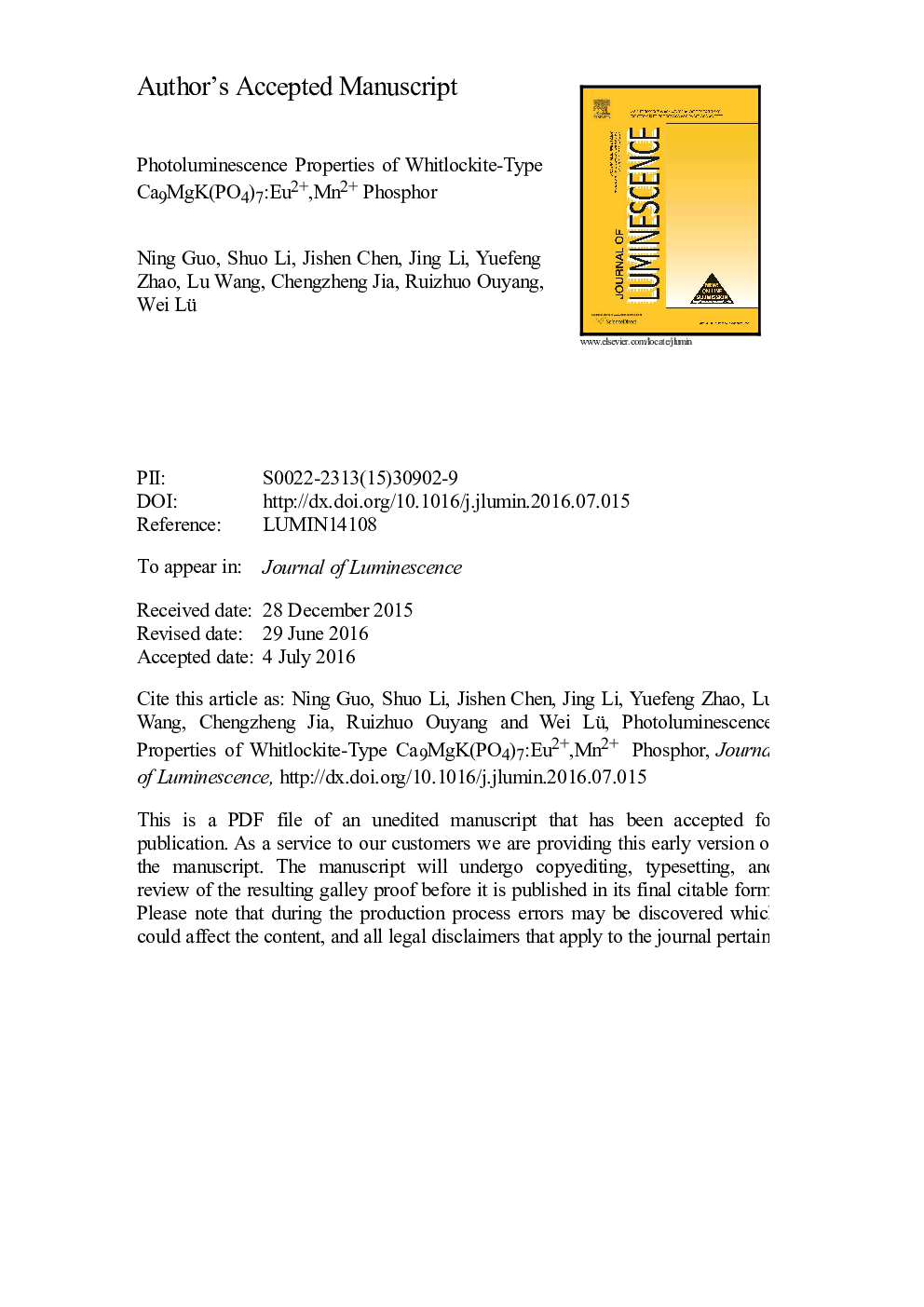| Article ID | Journal | Published Year | Pages | File Type |
|---|---|---|---|---|
| 5398332 | Journal of Luminescence | 2016 | 20 Pages |
Abstract
Novel single-phased Eu2+/Mn2+-coactivated whitlockite-type Ca9MgK(PO4)7 phosphors which can emit white light upon UV light excitation, are prepared by the solid-state method, and their luminescence properties are systematically investigated via a combination of X-ray powder diffraction and spectroscopy measurements. For Eu2+-Mn2+ codoped samples, an efficient energy transfer process can takes place and its mechanism is a resonant type via a dipole-quadrupole interaction which can be elucidated by Dexter׳s theoretical model. Following the principle of energy transfer, myriad luminescence colors with a large gamut from blue to purplish red and across white zone in a line in the chromaticity diagram of the CIE can be obtained by simply adjusting the concentration ratio of Eu2+ to Mn2+. Photoluminescence spectra reveal that the white color emission is originated from the combination of two emission bands of Eu2+ and Mn2+ ions. Additionally, their CIE chromaticity coordinates and correlated color temperatures (CCT) have been calculated and discussed in detail. The luminescence suggest that whitlockite-type phosphor, Ca9MgK(PO4)7, co-activated with europium and manganese, is a promising single-phased white-emitting candidate for use in ultraviolet-chip-based white LEDs.
Related Topics
Physical Sciences and Engineering
Chemistry
Physical and Theoretical Chemistry
Authors
Ning Guo, Shuo Li, Jishen Chen, Jing Li, Yuefeng Zhao, Lu Wang, Chengzheng Jia, Ruizhuo Ouyang, Wei Lü,
